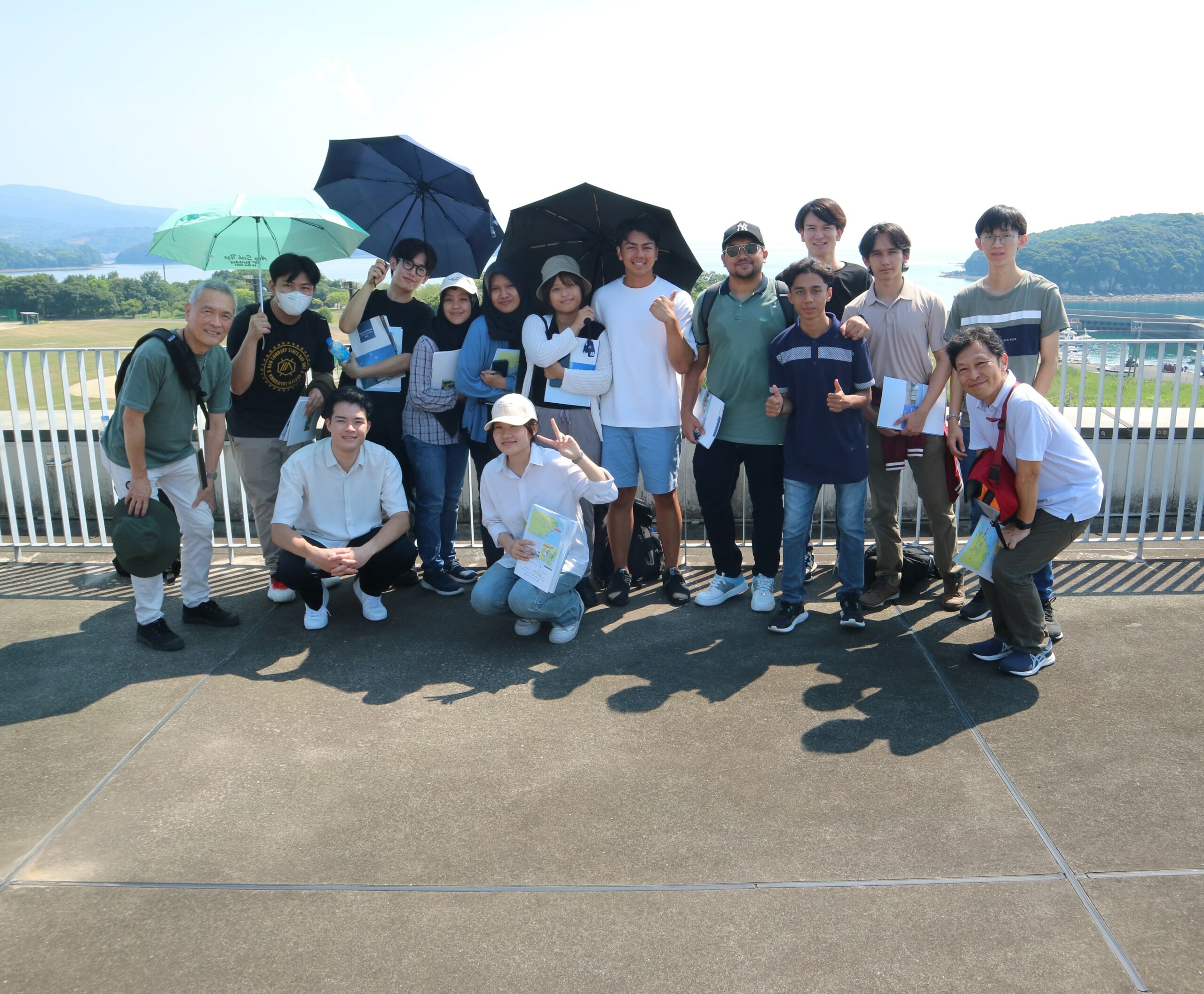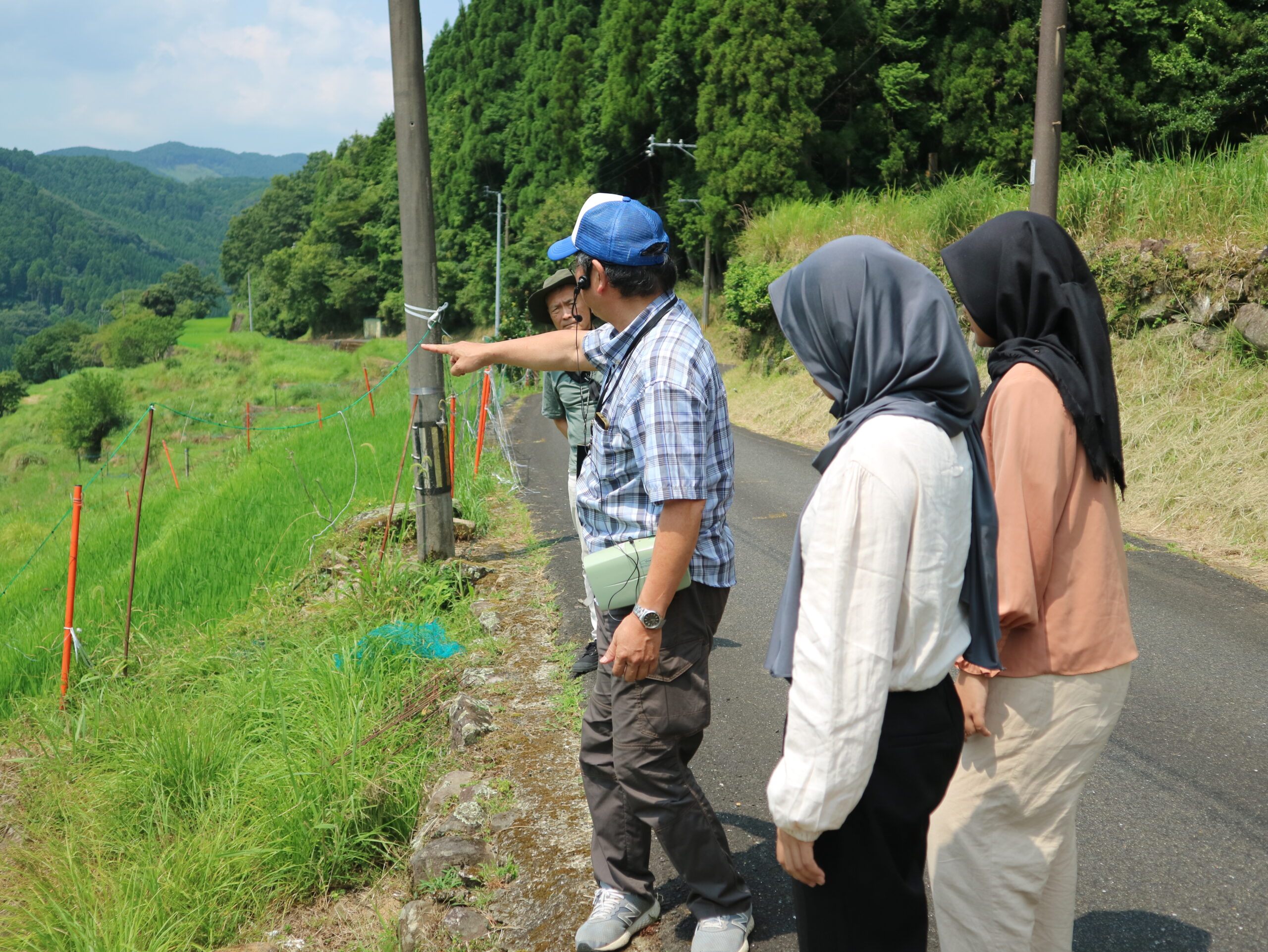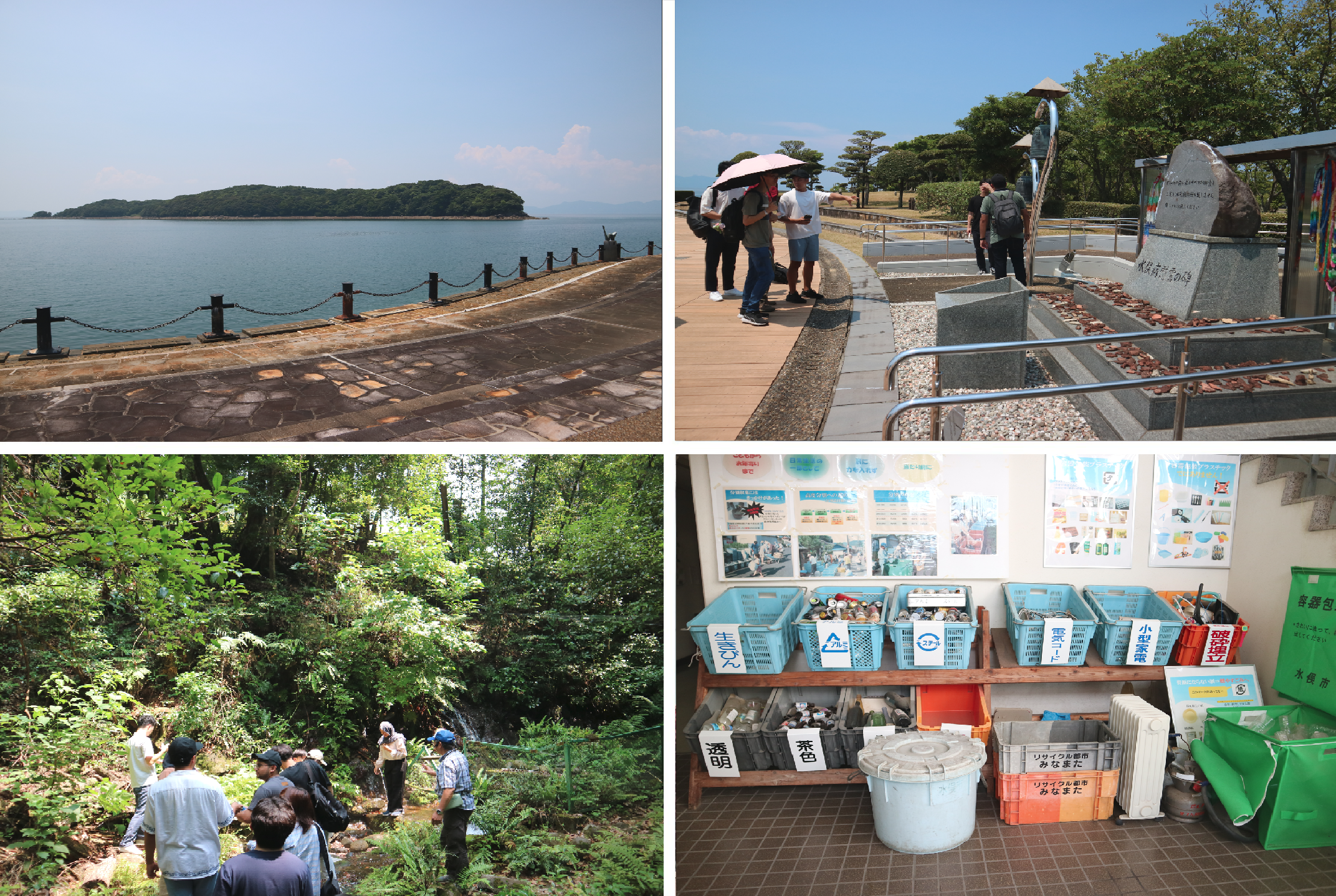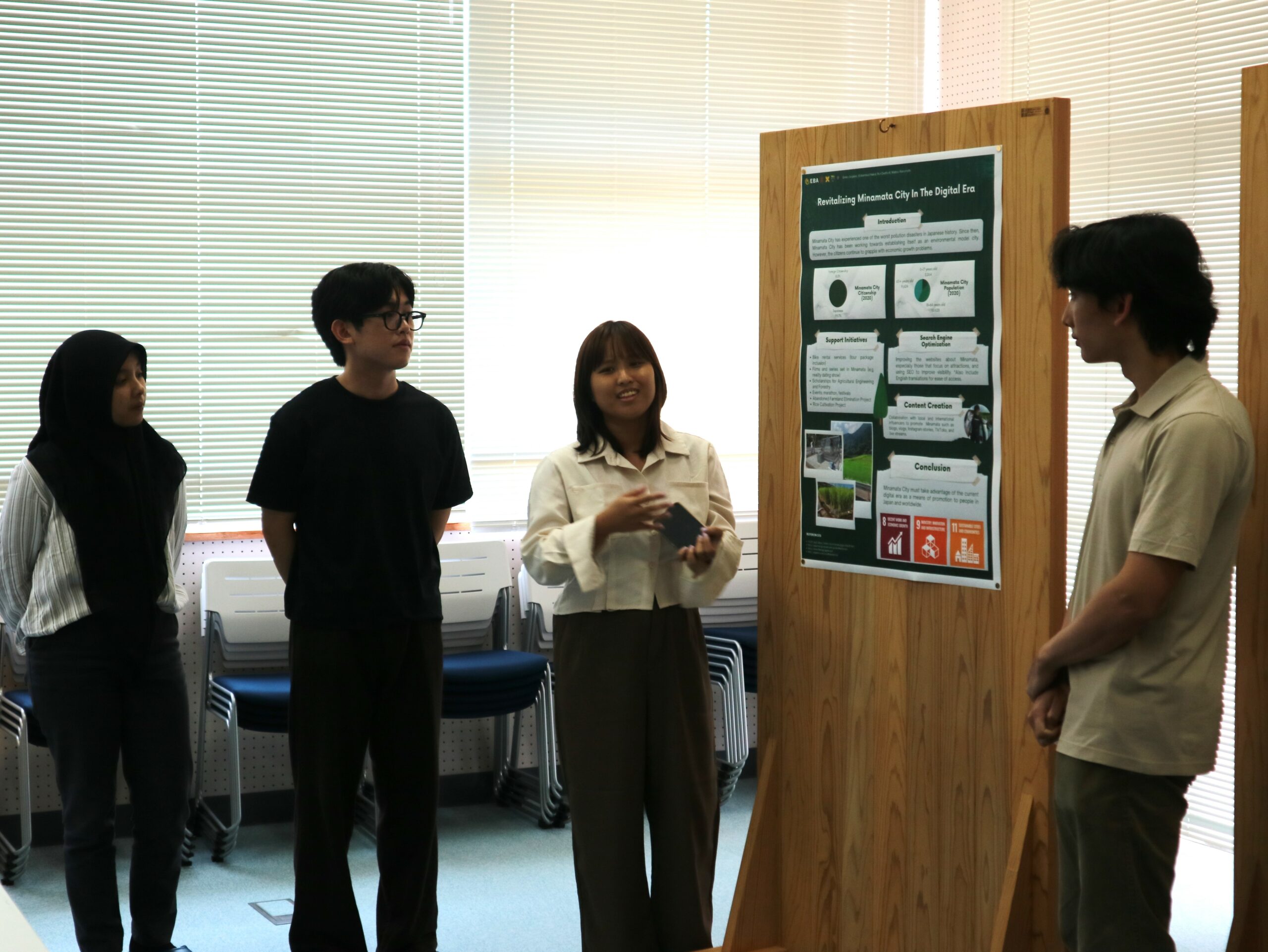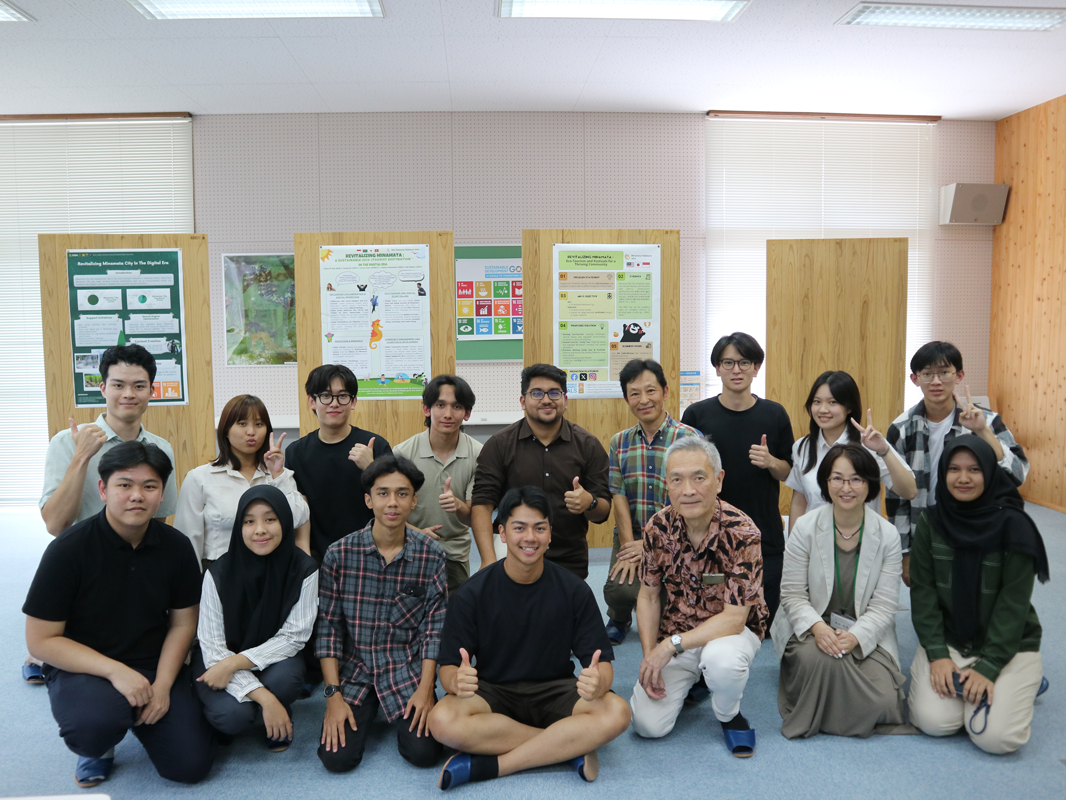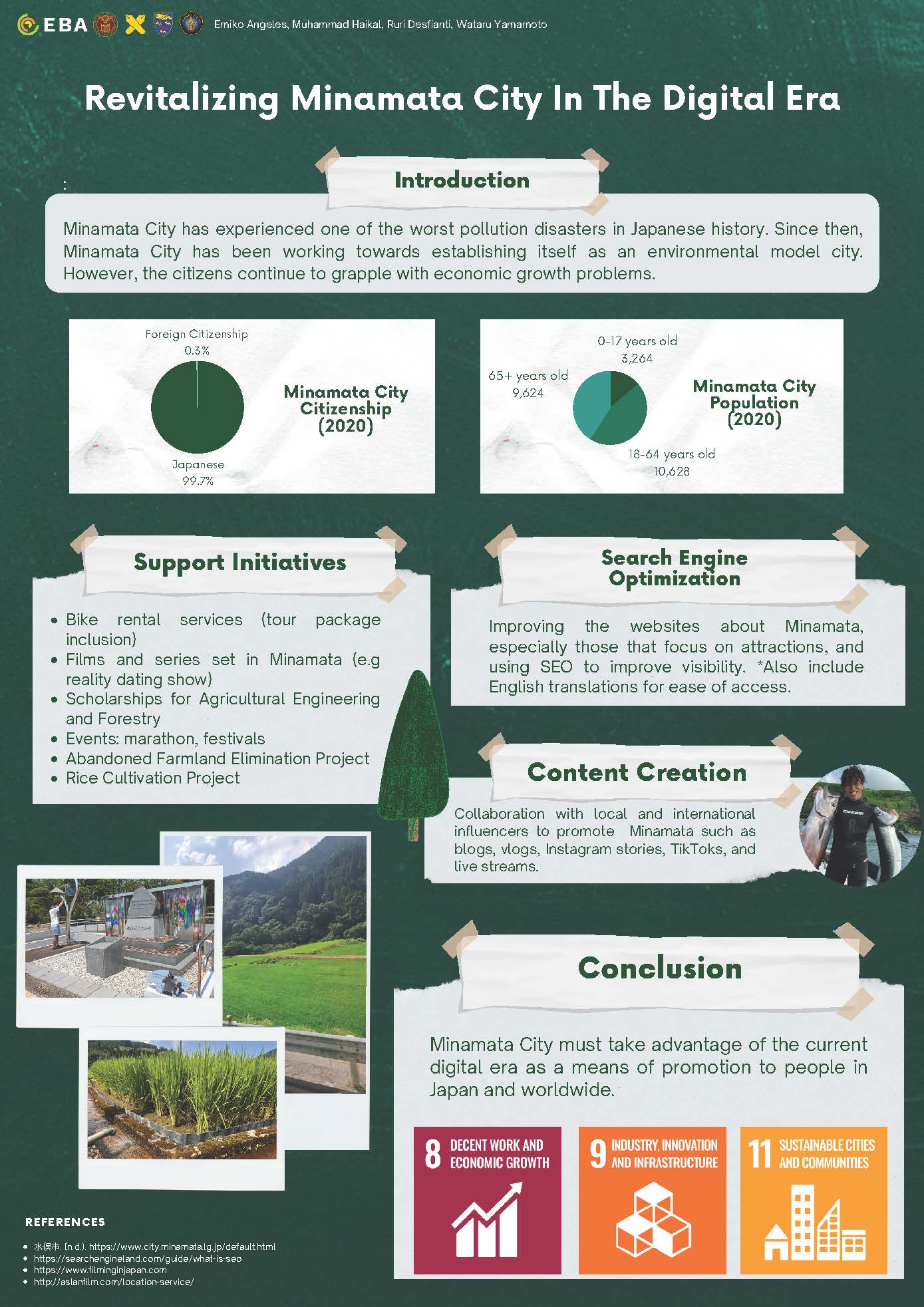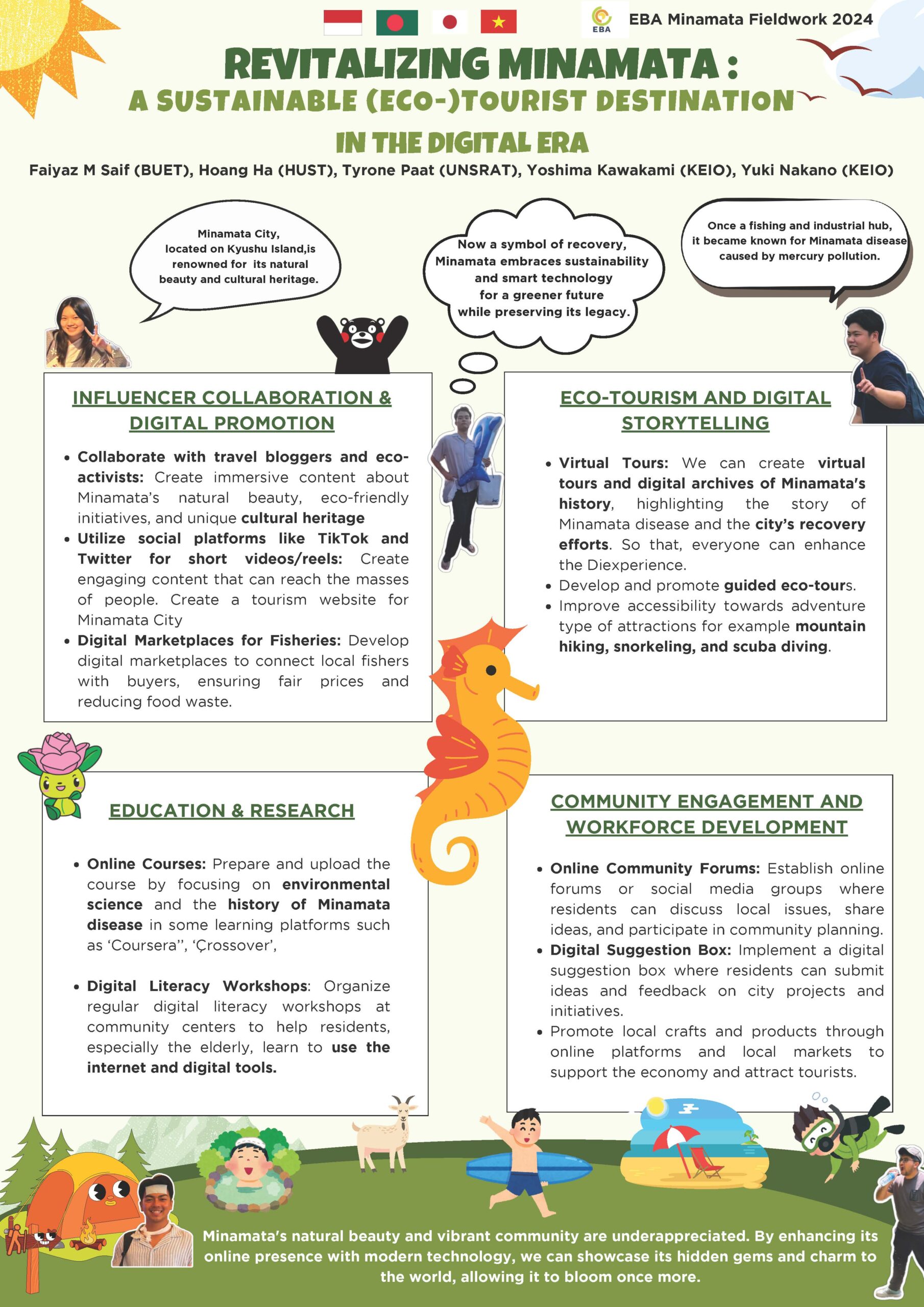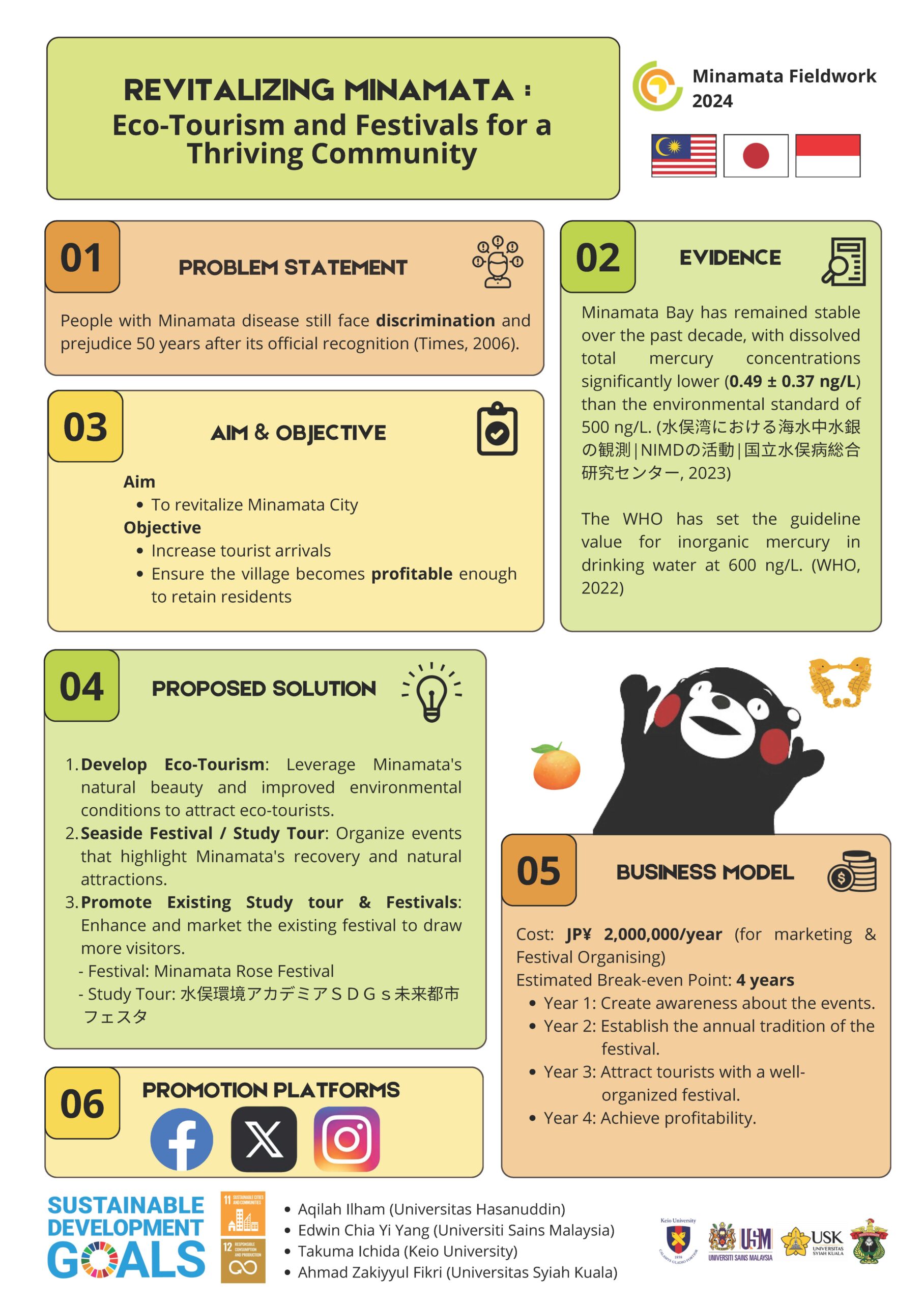Period: May ~ August 2024
-
Online Sessions and EBA Common Course: May 15th ~ July 17th
-
At the Field: August 1st – August 7th
-
Final Presentation (EBA Kalimantan Fieldwork 2024 + EBA Minamata 2024 Fieldwork participants) (Online): 18:00 (UTC+9)~, August 27th Please Click HERE to access YouTube
Participants: 16 (including Faculty)
Indonesia
Brawijaya University (UB)
-
-
Ruri Desfianti (Faculty of Computer Science)
-
Hasanuddin University (UNHAS)
-
-
Aqilah Ilham (Faculty of Engineering)
-
Syiah Kuala University (USK)
-
-
Ahmad Zakiyyul Fikri (Faculty of Engineering)
-
Universitas Sam Ratulangi (UNSRAT)
-
-
Tyrone Gilchrist Paat (Faculty of Engineering)
-
Japan
Keio University (KEIO)
-
-
Takuma Ichida (Faculty of Environment and Information Studies)
-
Yuki Nakano (Faculty of Environment and Information Studies)
-
Yoshima Kawakami (Faculty of Environment and Information Studies)
-
Wataru Yamamoto (Faculty of Policy Management)
-
Malaysia
University of Malaya (UM)
-
-
Muhammad Haikal Bin Mohd Zaki (Faculty of Engineering)
-
Universiti Sains Malaysia (USM)
-
-
Edwin Chia Yi Yang (School of Computer Sciences)
-
Bangladesh
Bangladesh University of Engineering and Technology (BUET)
-
-
Faiyaz Mohammad Saif (Institute of Information and Communication Technology)
-
Philippines
University of the Philippines Diliman (UPD)
-
-
Emiko Angeles (College of Arts and Letters)
-
Vietnam
Hanoi University of Science and Technology (HUST)
-
-
Than Hoang Ha (School of Economics and Management)
-
Fieldwork Host
Keio University (KEIO)
-
Fieldmaster: Keisuke Uehara (Faculty of Environment and Information Studies)
-
Fathima Assilmia (Keio University Global Research Institute)
-
Leandro Navarro Hundzinski (Keio University Global Research Institute)
Summary:
In this program, participants learned and utilized the EBA method, practicing Data Collection, Data Analyzation, Data Visualization, and Storytelling. They observed and learned about the impact of environmental pollution by exploring the field in Minamata city, located in Kyushu island, southern part of Japan. The city is known for Minamata disease, which is caused by mercury pollution from a chemical factory in 1950’s. It is the first disease caused by food chain due to environmental pollution.
Participants learned about the field while investigating the following questions:
- In the digital era, how can we revitalize Minamata City? Provide proposals considering the current situation in Minamata City.
- How could the Minamata disease incident have been avoided if modern technology had been available? What should we do now to apply the lessons learned?
During the fieldwork, students engaged in discussions with stakeholders for a deeper investigation of the issues faced by the local community. Then, propose possible solutions for sustainable development in Minamata city.
